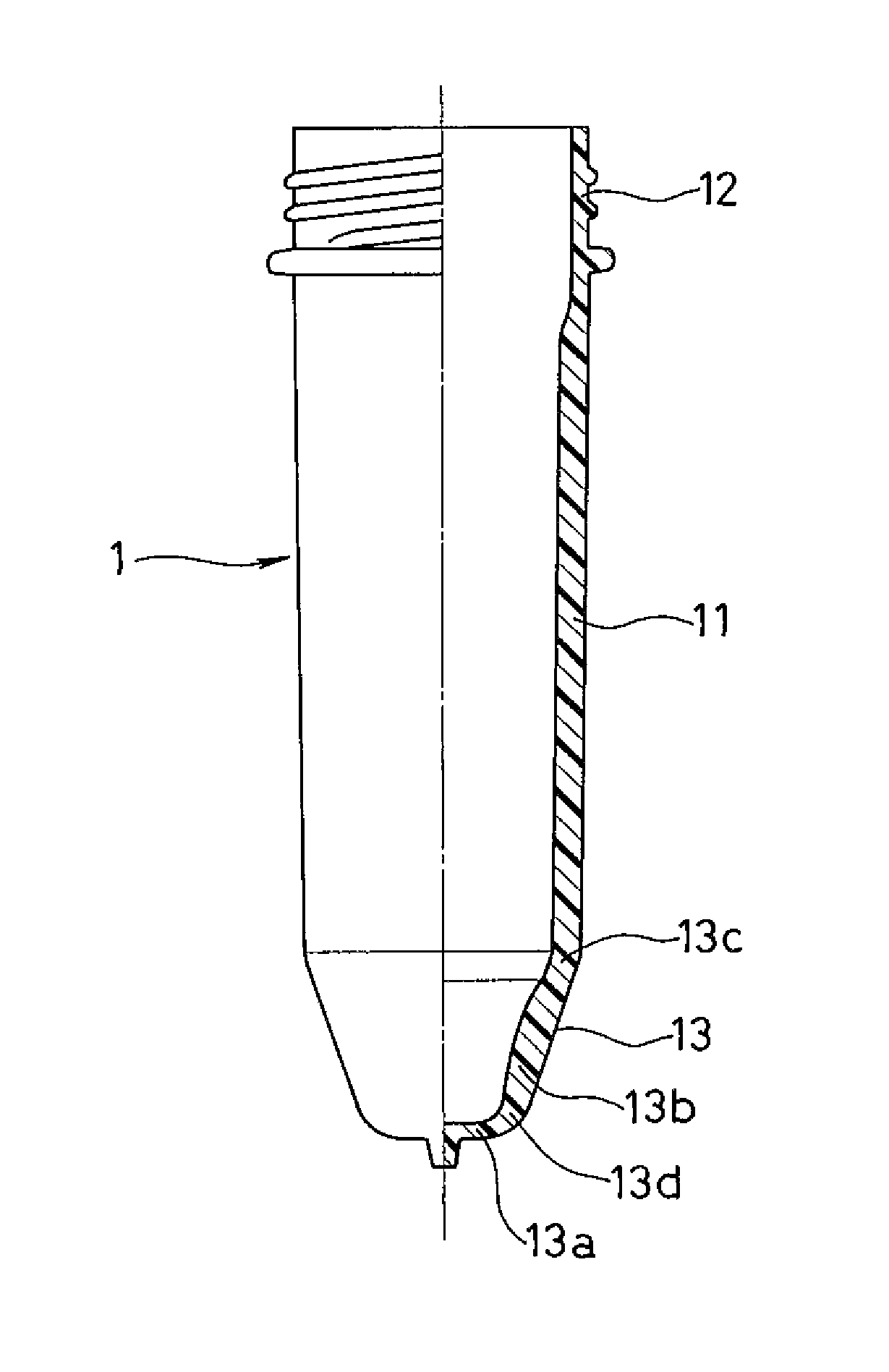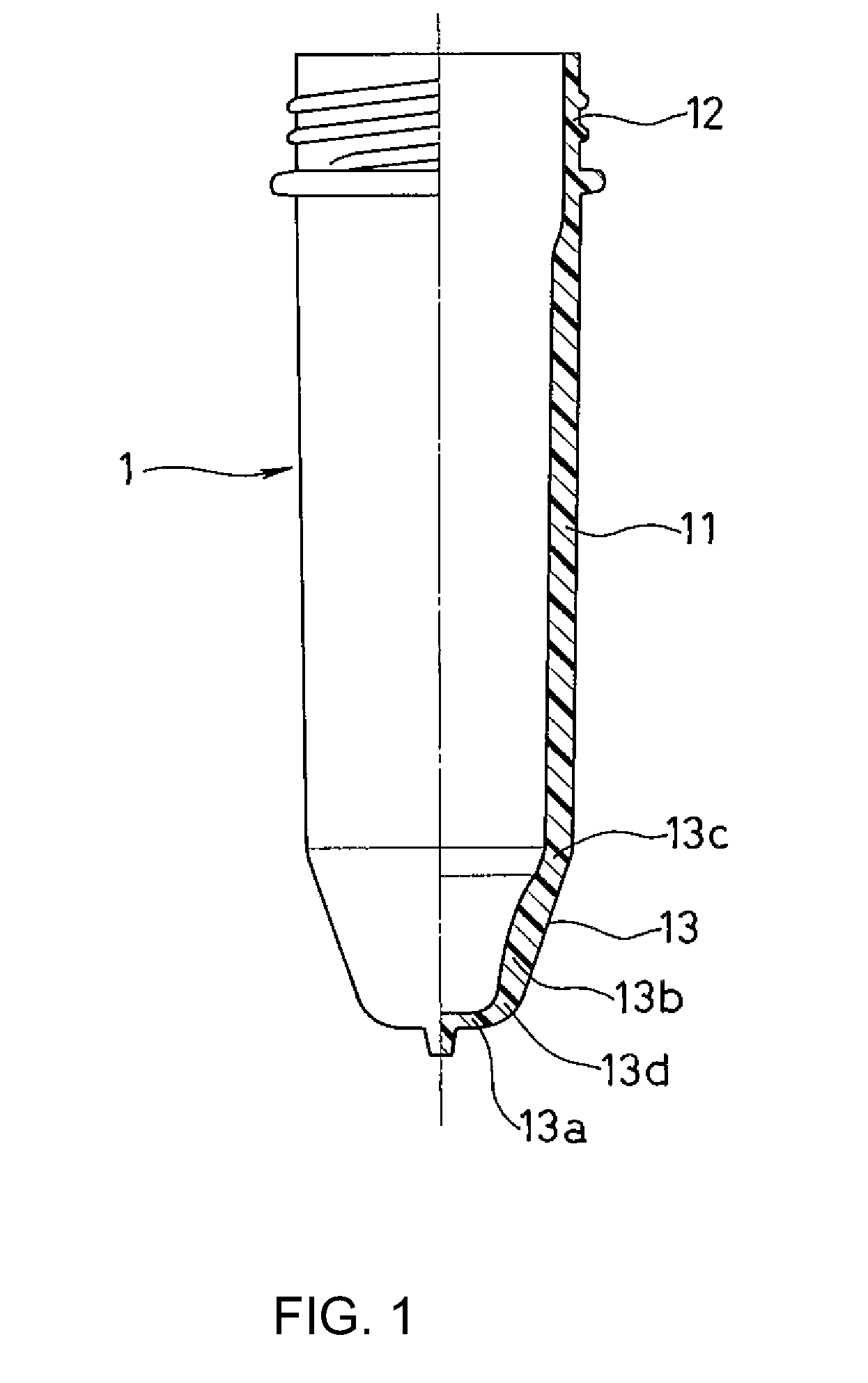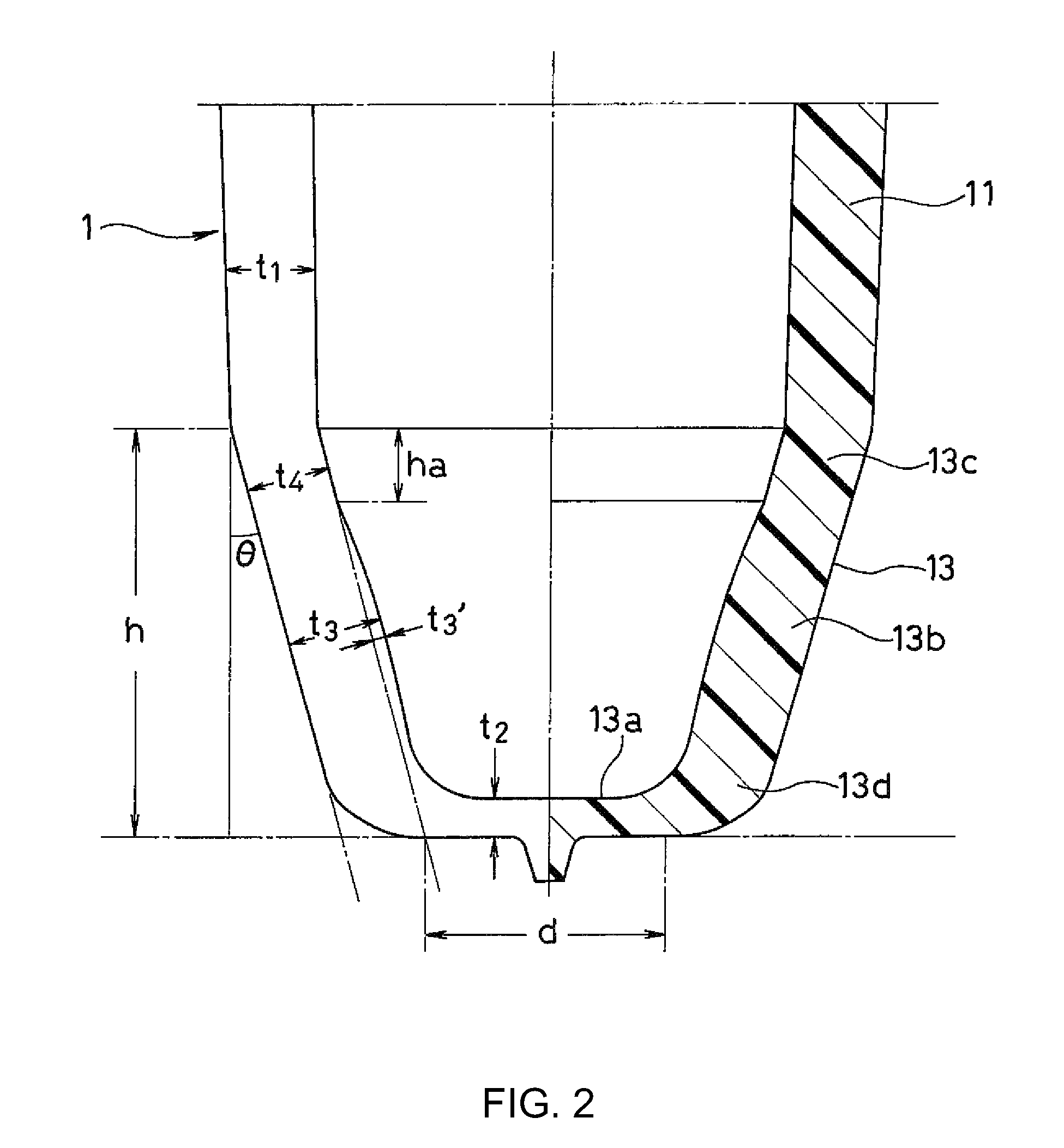Preform for stretch blow-molded bottle
a bottle and preform technology, applied in the field of closed-dense preforms, can solve the problems of increasing the amount of stretching, the bottle bottom section is thin, and the bottle bottom section has a large thickness, so as to reduce the weight of the bottle bottom surface section, improve the efficiency of stretching the bottom section of the preform, and increase the thickness of the bottom section
- Summary
- Abstract
- Description
- Claims
- Application Information
AI Technical Summary
Benefits of technology
Problems solved by technology
Method used
Image
Examples
example
Preform (Resin Material: Polyethylene Terephthalate, Weight: 50 g)
[0048]Thickness (Set Values)
[0049]
Central portion of barrel section (t1)3.55 mmBottom surface central portion (t2)1.72 mmBottle bottom surface-forming portion (t3)3.85 mmBottle bottom edge-forming portion (t4)3.45 mmHeight:Barrel section82 mmBottom section (h)18 mm
[0050]Diameter
[0051]
Inner diameter of central portion of barrel section (D)27.2 mmBottom surface central portion (d)15.7 mmInclination angle of bottom section (θ)11.8°
[0052]Stretch Blow Molding Temperature (Temperature (° C.) of Outer Surface 5 Seconds after Removal from Mold)
[0053]
Central portion of barrel section (t1)101.4Bottle bottom surface-forming portion (t3)105.4Bottle bottom edge-forming portion (t4)99.6
PUM
| Property | Measurement | Unit |
|---|---|---|
| thickness t2 | aaaaa | aaaaa |
| Weight | aaaaa | aaaaa |
| diameter | aaaaa | aaaaa |
Abstract
Description
Claims
Application Information
 Login to View More
Login to View More - R&D
- Intellectual Property
- Life Sciences
- Materials
- Tech Scout
- Unparalleled Data Quality
- Higher Quality Content
- 60% Fewer Hallucinations
Browse by: Latest US Patents, China's latest patents, Technical Efficacy Thesaurus, Application Domain, Technology Topic, Popular Technical Reports.
© 2025 PatSnap. All rights reserved.Legal|Privacy policy|Modern Slavery Act Transparency Statement|Sitemap|About US| Contact US: help@patsnap.com



